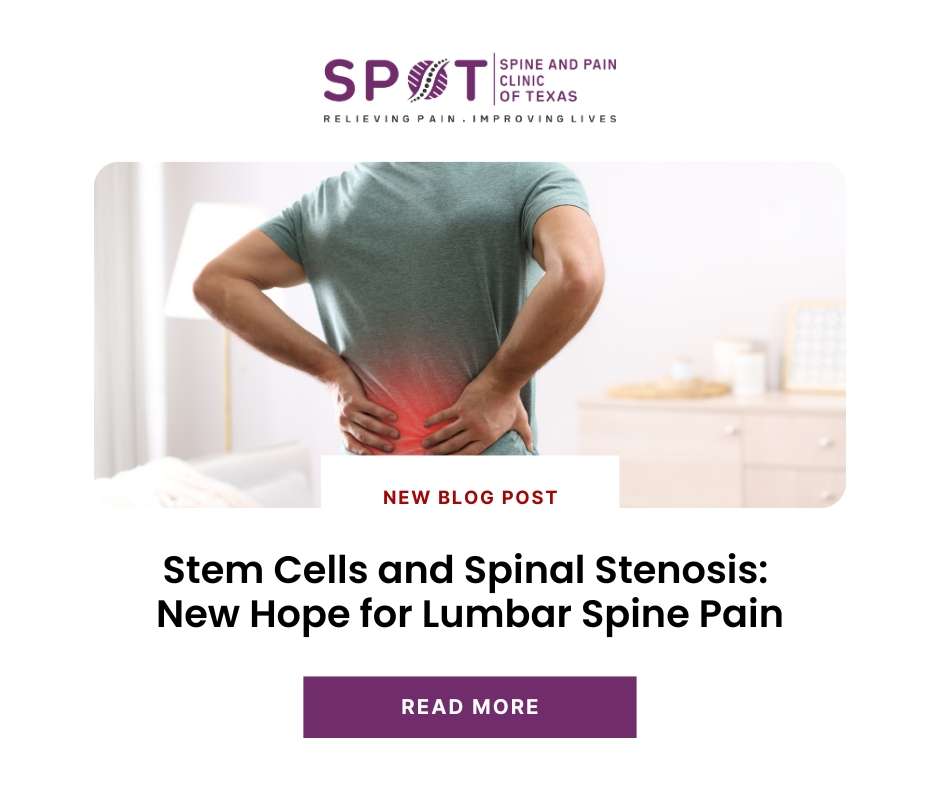Spinal stenosis is a condition that affects millions of people, particularly older adults. It occurs when the spaces within the spine narrow, putting pressure on the nerves that travel through the spine. This can lead to lumbar spine pain, numbness, tingling, and muscle weakness. Traditional treatments often fall short of providing long-term relief, leaving many patients searching for more effective options. Fortunately, advancements in regenerative medicine are offering new hope. Stem cells and spinal stenosis are at the forefront of these innovations, promising potential relief and improved quality of life for those suffering from this debilitating condition.
Understanding Spinal Stenosis and Its Impact
What is Spinal Stenosis?
Spinal stenosis is the narrowing of the spinal canal, which can cause pressure on the spinal cord and nerves. The condition is most commonly found in the lumbar region, which is the lower part of the back. The most common causes include:
- Degenerative Changes: Wear and tear of the spine over time can lead to osteoarthritis, which may result in bone spurs that narrow the spinal canal.
- Herniated Discs: The cushions between your vertebrae can dry out with age and bulge out, putting pressure on the spinal cord or nerves.
- Thickened Ligaments: Over time, the ligaments that hold the spine together can thicken and harden, leading to a narrowed spinal canal.
Symptoms of Lumbar Spinal Stenosis
Symptoms of spinal stenosis often develop gradually and may worsen over time. Common symptoms include:
- Pain in the Lower Back: A persistent ache or sharp pain that can radiate down the legs.
- Numbness or Tingling: Especially in the legs, feet, and buttocks.
- Weakness: Difficulty in walking or maintaining balance.
- Cramping: Muscle cramps that may worsen after standing for long periods or walking.
Challenges with Traditional Treatments
Conventional treatments for spinal stenosis, such as physical therapy, pain medications, and surgery, often provide limited relief. Medications can have side effects, and surgery involves risks and a lengthy recovery period. This has led to increased interest in alternative therapies, particularly regenerative medicine.
The Promise of Stem Cells in Treating Spinal Stenosis
Stem cells and spinal stenosis research is gaining traction as an innovative solution to this chronic condition. Stem cells have the unique ability to develop into different types of cells, making them powerful tools for repairing damaged tissues.
How Stem Cells Work
Stem cells can be harvested from the patient’s own body, typically from bone marrow or adipose tissue. Once collected, they are concentrated and injected into the affected area. The goals of using stem cells for spinal stenosis are to:
- Reduce Inflammation: Alleviating the pressure on nerves by decreasing inflammation in the spinal canal.
- Promote Tissue Regeneration: Encouraging the growth of new, healthy tissue to repair damaged spinal structures.
- Restore Functionality: Improving mobility and reducing pain for a better quality of life.
Can Stem Cells Help Spinal Stenosis?
The question many patients and doctors ask is: Can stem cells help spinal stenosis? While research is ongoing, early studies and clinical trials have shown promising results. Patients often report reduced pain, improved mobility, and a decreased need for pain medication after receiving stem cell therapy.
Stem Cell Treatment Options for Spinal Stenosis
At the Spine and Pain Clinic of Texas, stem cell treatment for spinal stenosis is offered as part of a comprehensive approach to pain management. The clinic’s experienced team utilizes cutting-edge techniques to provide patients with the best possible outcomes.
The Procedure
Stem cell therapy for spinal stenosis involves several steps:
- Consultation and Evaluation: A thorough assessment to determine if stem cell therapy is the right option for the patient.
- Stem Cell Harvesting: Typically performed under local anesthesia, stem cells are collected from the patient’s bone marrow or adipose tissue.
- Concentration and Injection: The harvested stem cells are processed and injected into the lumbar spine under imaging guidance to ensure precision.
- Follow-Up Care: Regular monitoring and supportive therapies to maximize the benefits of the treatment.
Advantages of Stem Cell Therapy
- Minimally Invasive: No need for major surgery, reducing risks and recovery time.
- Natural Healing: Utilizes the body’s own cells to heal and regenerate tissue.
- Reduced Dependency on Medications: Many patients experience less need for pain medications post-treatment.
Case Studies and Success Stories
The Spine and Pain Clinic of Texas has successfully treated numerous patients with stem cell therapy for spinal stenosis, reporting significant improvements in pain levels and overall quality of life. Case studies highlight:
- Patients experiencing significant pain reduction within weeks of treatment.
- Improvements in mobility and function, allowing individuals to return to daily activities.
- Decreased reliance on pain medications and other interventions.
What to Expect During and After Treatment
Understanding what to expect during and after stem cell lumbar spine treatment can help patients prepare for the procedure and recovery.
During the Procedure
The entire procedure typically takes a few hours, and patients can return home the same day. Local anaesthesia minimizes discomfort, and the process is guided by imaging technology for precision.
Recovery and Results
Recovery times vary, but most patients can resume normal activities within a few days. Full benefits may take several weeks to become apparent as the stem cells promote healing and regeneration.
- Immediate Post-Procedure Care: Patients may experience mild soreness at the injection site, which typically resolves within a few days.
- Long-Term Results: Many patients report continued improvement in symptoms and quality of life over several months as the regenerative effects take hold.
The Role of the Spine and Pain Clinic of Texas
The Spine and Pain Clinic of Texas is dedicated to providing innovative, patient-centred care for individuals suffering from spinal stenosis. Their team of specialists works closely with each patient to develop personalized treatment plans that address their specific needs and goals.
Comprehensive Care Approach
The clinic offers a holistic approach to spinal stenosis, combining stem cell treatment for spinal stenosis with other therapies such as physical therapy, lifestyle modifications, and pain management techniques. This comprehensive care model ensures patients receive the most effective and lasting relief possible.
Cutting-Edge Research and Techniques
The clinic stays at the forefront of medical advancements, participating in ongoing research and utilizing the latest techniques in regenerative medicine. This commitment to innovation ensures that patients benefit from the most current and effective treatments available.
Exploring the Future of Stem Cell Therapy
As research into stem cell treatment of spinal stenosis continues, the potential applications and benefits of this therapy are expanding. Ongoing studies are exploring:
Expanded Indications
Research is investigating the use of stem cells for other spinal conditions, including herniated discs and degenerative disc disease, offering hope for broader applications in the future.
Improved Techniques
Advancements in stem cell harvesting, processing, and delivery methods are enhancing the effectiveness and safety of treatments, promising even better outcomes for patients.
Collaboration and Innovation
The Spine and Pain Clinic of Texas is collaborating with research institutions and other healthcare providers to stay at the cutting edge of these innovations, ensuring that patients receive the best care possible.
Conclusion
Stem cells and spinal stenosis represent a promising frontier in the treatment of lumbar spine pain. With the potential to reduce pain, improve mobility, and enhance quality of life, stem cell therapy offers new hope for patients who have struggled with traditional treatments. At the Spine and Pain Clinic of Texas, patients can access state-of-the-art care that leverages the latest advancements in regenerative medicine. If you or a loved one is suffering from spinal stenosis, consider exploring stem cell therapy as a viable option for relief and recovery.
Medical Disclaimer
This blog post is intended for informational purposes only and should not be considered medical advice. Always consult with a healthcare professional for a proper diagnosis and treatment plan tailored to your specific needs.






